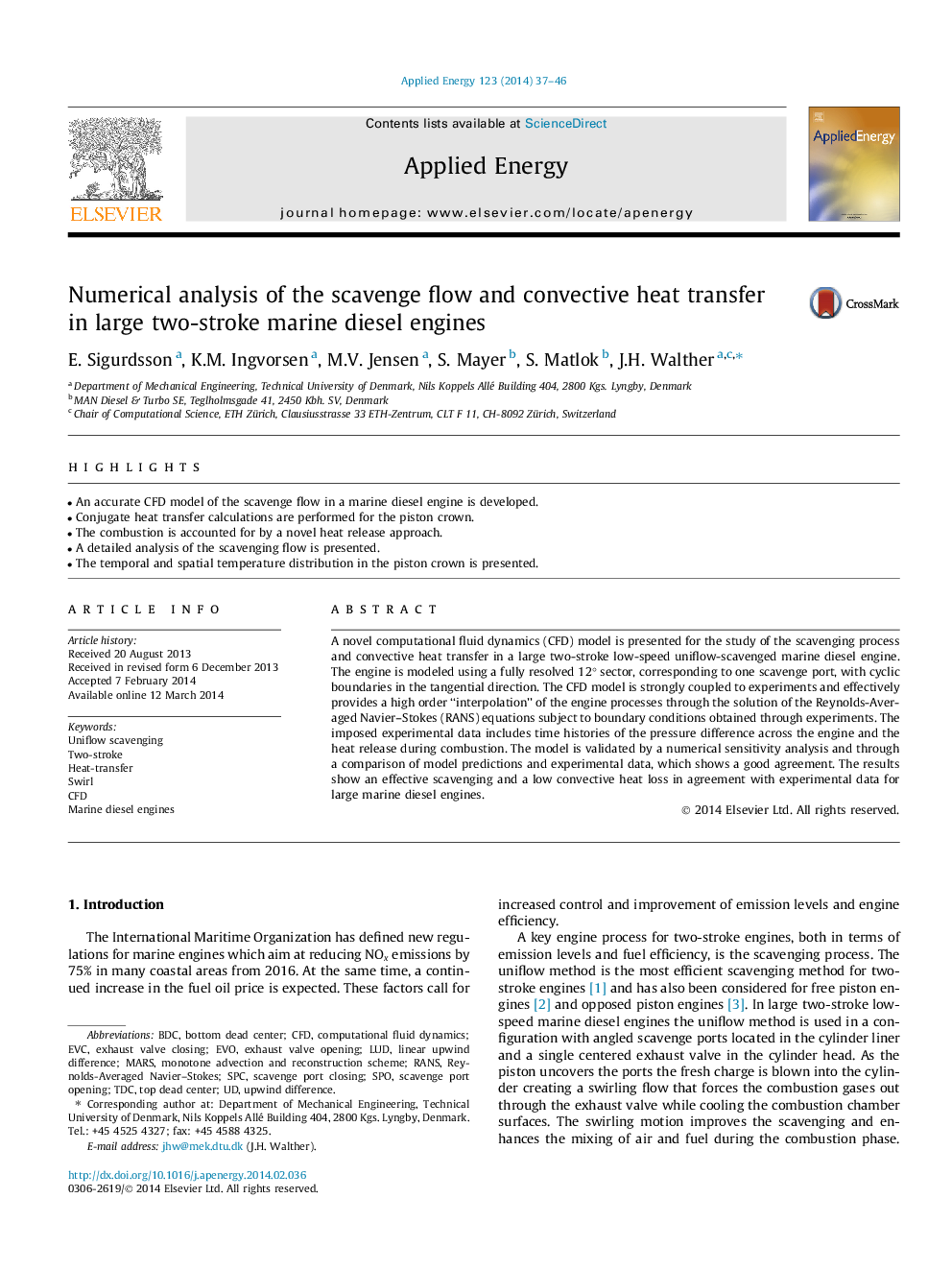| Article ID | Journal | Published Year | Pages | File Type |
|---|---|---|---|---|
| 6690305 | Applied Energy | 2014 | 10 Pages |
Abstract
A novel computational fluid dynamics (CFD) model is presented for the study of the scavenging process and convective heat transfer in a large two-stroke low-speed uniflow-scavenged marine diesel engine. The engine is modeled using a fully resolved 12° sector, corresponding to one scavenge port, with cyclic boundaries in the tangential direction. The CFD model is strongly coupled to experiments and effectively provides a high order “interpolation” of the engine processes through the solution of the Reynolds-Averaged Navier-Stokes (RANS) equations subject to boundary conditions obtained through experiments. The imposed experimental data includes time histories of the pressure difference across the engine and the heat release during combustion. The model is validated by a numerical sensitivity analysis and through a comparison of model predictions and experimental data, which shows a good agreement. The results show an effective scavenging and a low convective heat loss in agreement with experimental data for large marine diesel engines.
Keywords
Related Topics
Physical Sciences and Engineering
Energy
Energy Engineering and Power Technology
Authors
E. Sigurdsson, K.M. Ingvorsen, M.V. Jensen, S. Mayer, S. Matlok, J.H. Walther,
